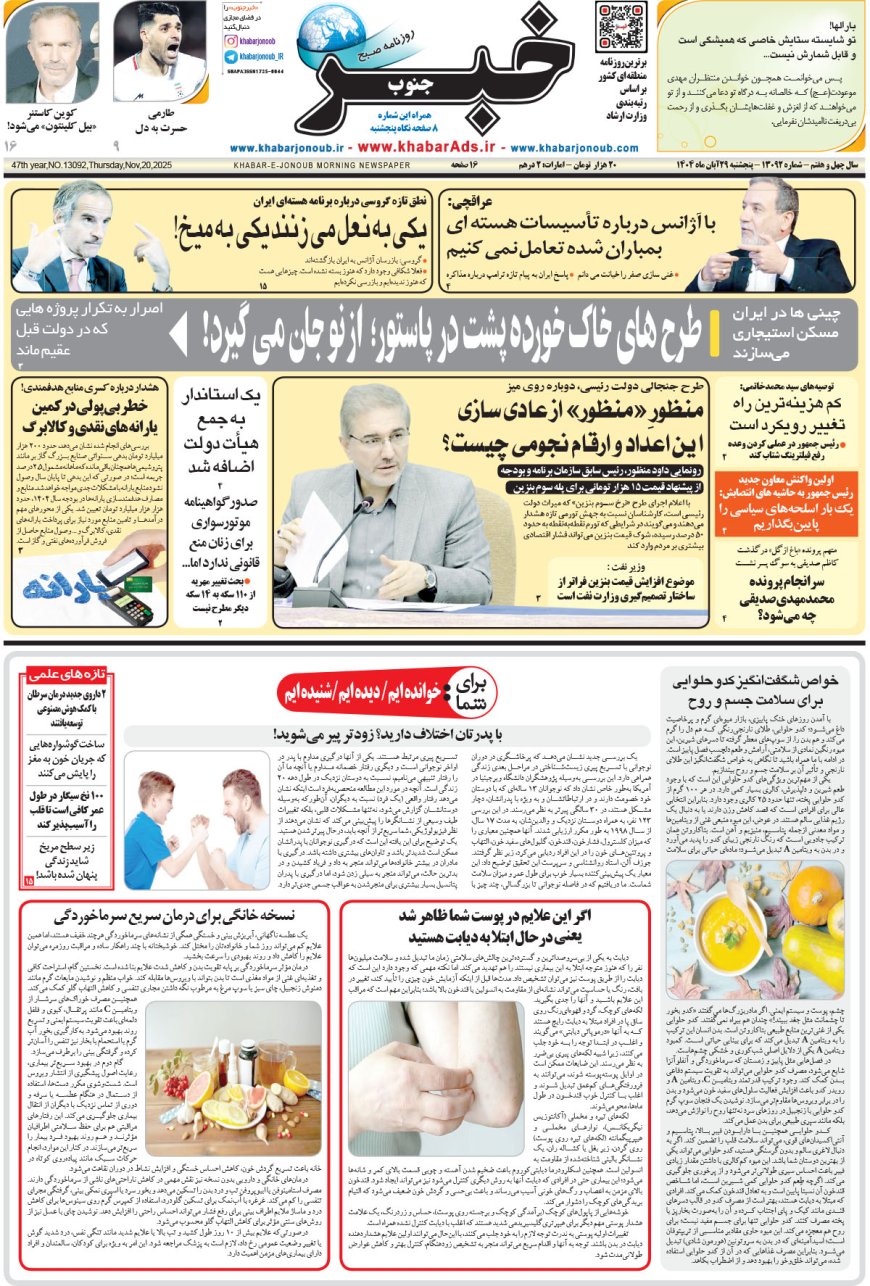دیسیپلین در جوایز بین المللی معماری چگونه تعریف میشود؟»

دیسیپلین چیست؟
در جوایز معماری بین المللی دیسیپلین فقط یک واژه تخصصی نیست؛ بلکه معیاری کلیدی برای تشخیص منش حرفهای و کیفیت فکری پروژه است.
دیسیپلین یعنی داشتن ساختار در اندیشه، نظم در فرآیند، و تعهد به زمینه. در فضای جوایز بین المللی، این ویژگیها نشانه بلوغ حرفهای یک پروژهاند.
دیسیپلین به مثابه چارچوب:
پروژه دارای دیسیپلین حتی اگر کوچک، مفهومی یا موقتی باشد، از منطق درونی و پاسخگویی روشن به نیازها و انسجام در تصمیم گیری برخوردار است.
در جوایز معتبر مانند پریتزکر یا آقاخان، داوران بیشتر از آن که به فرم ظاهری نگاه کنند به ساختار فکری اخلاق حرفهای و انسجام پاسخگویی پروژه توجه دارند.
پنج نشانه یک پروژه دیسیپلینمند:
– شروع از مسئله واقعی
– شناخت دقیق زمینه اجتماعی، اقلیمی، فرهنگی
– فرآیند منسجم و مستند
– اولویت بندی ارزشها به جای ظاهر
– هماهنگی بین ایده فرم و اجرا
تفاوت دیسیپلین با سبک:
داشتن سبک فرمی، دیسیپلین نیست. دیسپلین یعنی روشمند بودن، نه صرفاً داشتن ظاهری مشخص یا پرزرق و برق.
دیسیپلین و داوری:
داوران به دنبال پروژههایی هستند که بتوانند پاسخگو، مسئول و دارای ساختار فکری روشن باشند؛ نه صرفاً متفاوت یا نمایشی.
مثال اول: جایزه آقاخان
در این جایزه دیسیپلین معادل احترام به زمینه جامعه و معناست. پروژههایی با مصالح بومی، اگر اندیشهمند و متعهد باشند، میتوانند برنده شوند.
مثال دوم: جایزه پریتزکر
دیسیپلین در این جایزه یعنی بلوغ فکری پروژههایی مانند آثار آلوارو سیزا، تویو ایتو یا دیوید چیپرفیلد، نمونههایی هستند که فرم را در خدمت معنا و مسئولیت اجتماعی قرار دادهاند.
تفاوت دو رویکرد:
پریتزکر به عنوان معادل «نوبل معماری» شناخته میشود و تأکید آن بر کیفیت معماری خلاقیت و تأثیرات اجتماعی است. از سوی دیگر جایزه آقاخان تمرکز خاصی بر روشهای بومی و اسلامی معماری در کشورهای در حال توسعه دارد. این دو نمونه نشان میدهند که چگونه دو جایزه معتبر هر یک از منظر متفاوتی دیسیپلین معماری را تفسیر و ارزیابی میکنند.
نکته قابل توجه:
به عنوان مثال هیئت داوران جایزه پریتزکر ۲۰۲۴ در بیانیه خود صراحتاً از لوریت خواستهاند «دیسیپلین معماری را زیر سؤال» ببرد تا هر اثر معماری در متن اجتماعی و فرهنگی خود بازتعریف شود. این نقل قول قوی نشان میدهد که دیسیپلین نه تنها یک معیار بلکه بستری برای تحول فکری و اجتماعی پروژهها در نظر گرفته میشود.
زیبایی بدون دیسیپلین؟
اگر یک پروژه تنها به لحاظ بصری جذاب باشد اما فاقد فرآیند اندیشهمند، انسجام و پاسخگویی به زمینه باشد، برای داوران جدی ارزشی نخواهد داشت.
دیسیپلین = منش حرفهای معمار
تحلیل تصمیم گیری آگاهانه اخلاق حرفهای و انسجام میان فکر و عمل از ارکان دیسیپلین معماریاند.
چگونه دیسیپلین را در پروژهمان بسازیم؟
۱. از مسئله شروع کنید نه از فرم.
۲. زمینه را دقیق بشناسید.
۳. مسیر طراحی را مستند کنید.
۴. ایده را شفاف بیان کنید.
۵ در برابر وسوسه اغراق مقاومت کنید.
دیسیپلین در ارائه:
ارائه خوب، تنها طراحی زیبا نیست. دیاگرامها، اسکیسها و متنها باید روند فکری پروژه را شفاف و صادقانه منتقل کنند.
پروژه بدون دیسیپلین = ادعای بیپایه
جذابترین رندرها هم نمیتوانند ضعف در منطق و فرآیند طراحی را پنهان کنند.
دیسیپلین یعنی پاسخ گویی معمار به:
– اقلیم
– بافت اجتماعی
– نیاز واقعی
– تحولات آینده
داوران در پی درک روح پروژه اند؛ و این روح، در دیسیپلین معمار و تعهد او به فرآیند معمارانه تجلی مییابد.
و به یاد داشته باشیم:
داوران جوایز معماری، نه بر اساس سلیقه یا ذوق شخصی، بلکه با شناخت عمیق از معیارها، منشور و ارزشهای جایزه، قضاوت میکنند. این نیز بخشی از دیسیپلین معماری است: تعهد به اصول، نه سلیقه.
پروژه شما چه ساختار و منشی دارد؟ درباره دیسیپلین در طراحی خود تأمل کنید و آن را با زبان واضح و حرفه ای روایت کنید.
دیدگاهتان را با ما به اشتراک بگذارید.
“How is ‘Discipline’ defined in International Architecture Awards?”
What is Discipline?
In international architecture awards, discipline is not just a technical term; it’s a key criterion for recognizing a project’s professional integrity and intellectual depth.
The Concept of Discipline in Architecture:
Discipline means having structure in thought, order in process, and commitment to context. In the realm of international awards, these qualities are markers of a project’s professional maturity.
Discipline as a Framework:
A disciplined project-whether small, conceptual, or temporary-displays internal logic, clear responsiveness to needs, and consistency in decision-making.
In prestigious awards such as the Pritzker or the Aga Khan, juries focus less on superficial form and more on intellectual structure, professional ethics, and the coherence of the project’s response.
:Five Signs of a Disciplined Project
– Rooted in a real issue
– Deep understanding of context (social, climatic, cultural)
– A coherent and well-documented process
– Value-driven rather than form-driven
– Harmony between idea, form, and execution
Discipline vs Style:
Having a formal style is not the same as having discipline. Discipline means being methodical-not merely having a distinctive or flashy appearance.
Discipline and Judging:
Juries seek projects that are thoughtful, responsible, and intellectually structured-not merely novel or theatrical.
Example 1: The Aga Khan Award
In this award, discipline equates to respect for context, community, and meaning Projects using local materials can win-if they are thoughtful and committed.
Example 2: The Pritzker Prize
In this prize, discipline means intellectual maturity. Works by architects like Alvaro Siza, Toyo Ito, and David Chipperfield show how form can serve meaning and social responsibility.
Two Different Perspectives:
The Pritzker-often called the “Nobel of Architecture”-emphasizes architectural quality, creativity, and social impact. In contrast, the Aga Khan Award places special focus on indigenous and Islamic architectural approaches in developing countries. These two prestigious awards illustrate how architectural discipline is interpreted and assessed from different vantage points.
A Key Insight:
For example, the Pritzker Prize jury in 2024 explicitly asked the laureate to “question architectural discipline,” encouraging each work to be redefined within its own social and cultural context. This powerful statement shows that discipline is not just a benchmark-it is also a platform for intellectual and societal transformation.
Beauty Without Discipline?
A visually appealing project that lacks thoughtful process, coherence, and contextual relevance will hold little value for serious jurors.
Discipline = The Architect’s Professional Ethos
Analysis, informed decision-making, professional ethics, and the alignment between thought and action are foundational to architectural discipline.
How to Cultivate Discipline in Your Project:
۱. Begin with a real problem, not a form
۲. Study the context thoroughly
۳. Document the design process
۴. Articulate your idea clearly
۵. Resist the temptation to exaggerate
Discipline in Presentation:
Good presentation is not just beautiful design. Diagrams, sketches, and texts should honestly and clearly communicate the project’s thought process.
A Project Without Discipline = Baseless Claim
Even the most attractive renderings cannot hide a weak design logic or flawed process.
Discipline Means The architect’s responsiveness to:
– Climate
– Social fabric
– Real needs
– Future transformations
Jurors seek to grasp the soul of a project; and that soul is reflected in the architect’s discipline and commitment to the architectural process.
Let’s Remember:
Architecture juries do not judge based on personal taste or style-but through deep understanding of criteria, principles, and the values of each award.
This, too, is part of architectural discipline: a commitment to principles over preference.
What structure and ethos does your project embody?
Reflect on the discipline in your design—and express it with clarity and professionalism.
.Share your thoughts with us in the comments
منبع :رسانه ی معمارنیوز(رویدادمعماری)



 Admin1
Admin1 



